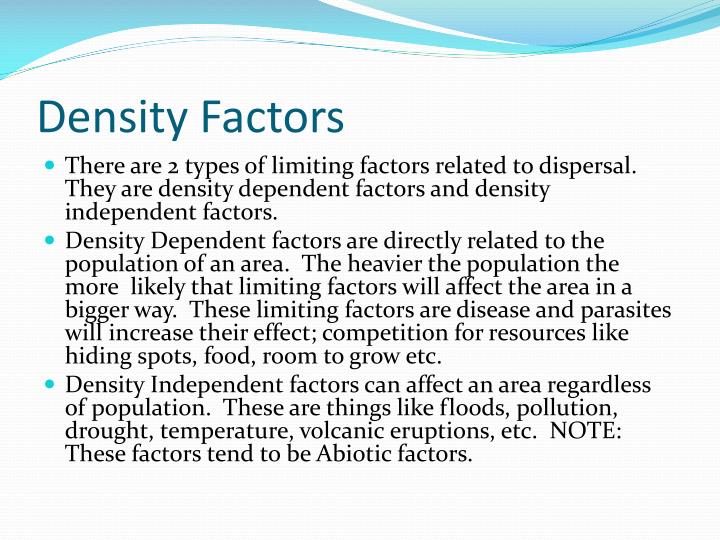

Often, the density independent factors such as these cause a steady and slow drag on populations over time. Thus, whether it is the last pair of endangered clownfish present in the ocean or have a huge population such as sparrows, our birth rate is still impacted negatively. Even the organisms present in the oceans get affected as the pollutants dissolve from the atmosphere into different water sources. From there, they are globally carried and affected all the organisms.

While humans are concentrated in cities across the globe, the chemicals and emissions we create are dispersed into the atmosphere. Like the other density independent factors, pollution is also one of the good examples of density independence. They could also have been the last of their species or one in a billion. These plants and animals die, irrespective of how dense their population was. Several news images showed pictures of fish washed up into roadways. Several animals, such as amphibians and fish, succumb to rapidly falling and rising tides. For several species, drastically, a hurricane increases the death rate, as the trees just cannot withstand the waves and wind. Trees such as the one in the above-given image would survive any of the regular storms. A fact is, hurricanes will increase the death rate for several species, while a few other species notice a highly increased birth rate after the destruction.ĭuring any hurricane, winds increase to very dangerous speeds, tearing the large trees out of the ground. Often, while we notice the devastation of these storms on the news, we consider the impacts of such a storm rarely on vegetation and wildlife in the area. Suppose, consider a hurricane slamming into a coastline. Let us look at the limiting factors examples in detail.Ī natural disaster is one of the perfect examples of an independent density factor. The relative importance of these particular factors differs among the populations and species.ĭensity Independent Limiting Factors Examples The dynamics of most living things' populations are determined by a mix of density-dependent and density-independent factors (those that arise when individual concentrations in a population rise above a certain level). For example, for many organisms, which breathe oxygen, the availability of oxygen is one of the density-independent factors if they decline the breathable oxygen concentrations are suddenly made unavailable, such as when oxygen-using plants are covered by the rising floodwaters, those organisms perish, and the populations of different affected plant species decline. Such types of factors stemming from climate and weather and the wildfires, flooding, landslides, and other disasters as well - affect the density independent population control of living things whether individuals are spaced far apart or clustered close together. Often, the density-independent factors arise from the chemical and physical (rather than density biology) phenomena. Examples include natural disasters like forest fires.In ecology, a density independent factor, also known as a limiting factor, is any force that influences the size of a population of living things regardless of population density (number of individuals per unit area). Density- independent factors affect per capita growth rate independent of population density. One example is competition for limited food among members of a population. Which is an example of a density independent Reduction Factor? In contrast, the effects of density- dependent factors intensify as the population increases in size.Īlso to know, what are the 4 density dependent factors?ĭensity- dependent factors include competition, predation, parasitism and disease.


Density- independent factors, such as weather and climate, exert their influences on population size regardless of the population's density. Likewise, what is the difference between a density dependent and a density independent abiotic factor? … of populations into density- dependent and density- independent factors. An example of such a factor is an earthquake, which will kill all members of the population regardless of whether the population is small or large. These factors vary in different zoning districts.īesides, what is a density independent factor?ĭensity- independent factor Any factor limiting the size of a population whose effect is not dependent on the number of individuals in the population. The allowable residential square footage of the building is divided by the density factor to determine the allowable number of units. Density Factor is a zoning term for the maximum allowable number of residential units one can develop on a property.


 0 kommentar(er)
0 kommentar(er)
